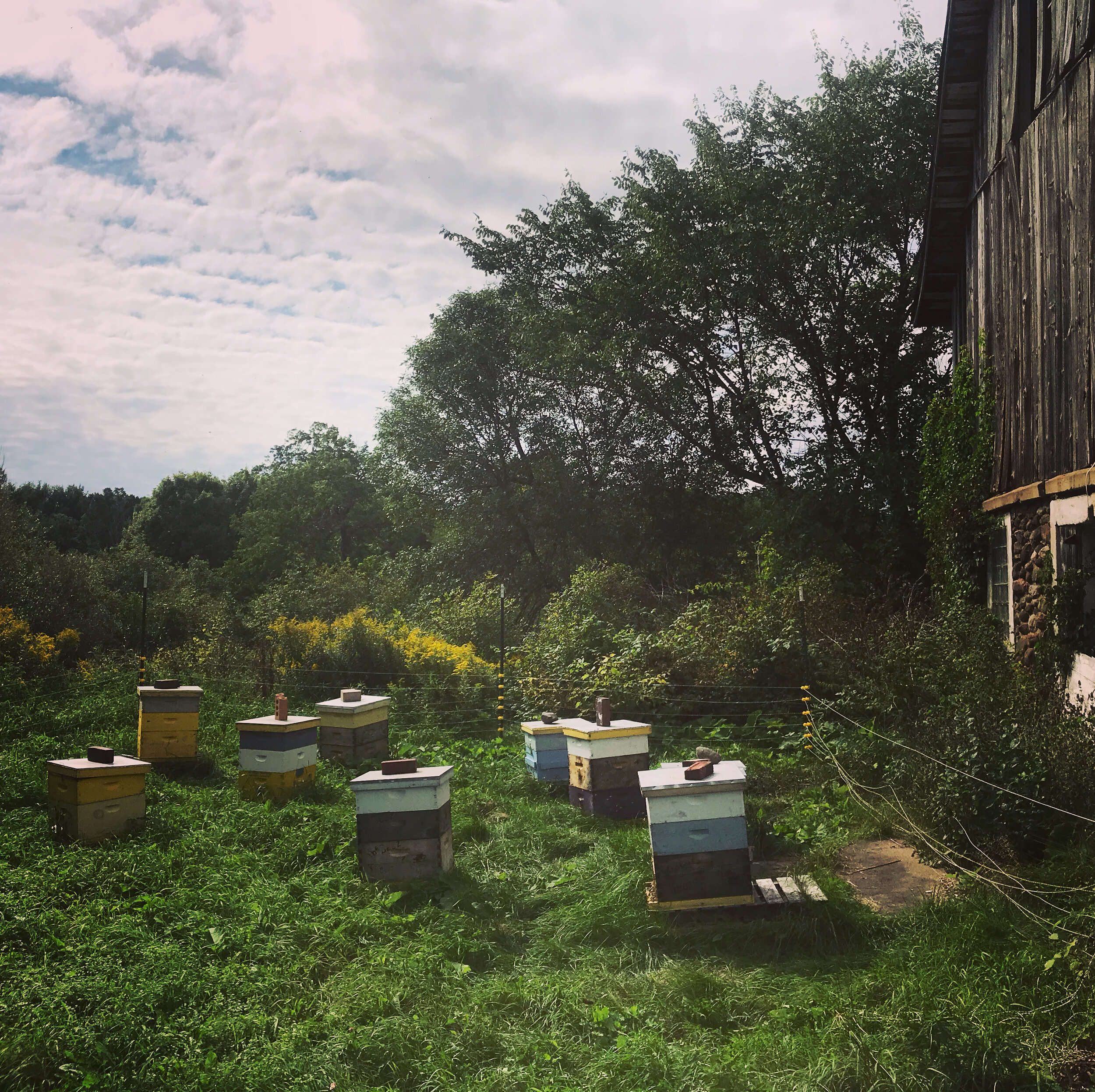WHAT SHOULD I BEE DOING IN AUGUST AND SEPTEMBER 2020
WILD AMERICA, MILD WINTER to STRONG SUMMER/FALL NECTAR FLOW, OH MY!
You can smell it in the air, in the hives, you can see it in the sky and the golden landscape. The sweet calm of autumn helps us breath for a minute among the madness of the world. Before this latest cool down, this fall has been lovely and productive for our little ladies. The low temperature where I live this week will be 36 degrees! No no no, too early! That is a mere 4 degrees away from freezing and I am not ready. Although it is a nice break from heavy work outside, the bees need a dependable and gradual fall to adequately prepare for the long dark night. However, this shall pass and the forecast looks warm and pleasant next week. Phew! I really can’t handle another year where we transition right into winter. Especially this year.
I just finished reading the blog posts from August and September of 2019. To bee honest, it sounds very similar to this year. I encourage you to go back and read it! The biggest difference is what happened last winter combined with this summer. Last winter was mild and hive survival was strong. Combine that with a strong and heavy nectar flow of this summer/fall, and you have more brood cycles and therefore a higher mite load overall. If we have a tough winter, could be devastating for hive mortality numbers. But that is the pessimist/realist in me. The optimist says take care of your mites early and make sure the hives have plenty of stores and they will be alright!
WHAT ARE THE BEES DOING IN AUGUST/SEPTEMBER?
In most but not all locations, the bees have been responding to warm, humid weather and a strong nectar flow of goldenrod, asters and some other wildflowers that provide abundant stores of pollen and nectar for winter. Some hives decided to swarm! Some hives are replacing older queens via supersceeding which can be frustrating for the beekeeper. I have personally mistaken these queen events for swarms based on the number of queen cells in the hives but in returning, I found that the population had not changed, just the presence of my original queen. In talking to another beek, he speculated that maybe bees with Russian genetics are more predisposed to do this at this time of year to start spring with a young queen. I will update you in my October blog about their success in mating a new queen this time of year. A strong nectar flow will help but I worry about the number of drones left in the hives. We shall see! Remember, in both scenarios, there is little you can do this time of year but wait it out. Let them sort out the queen event. The more digging you do during this time, the more damage. Like you end up with a laying worker or a drone layer.
Other than queen events, the bees are focused on pollen collection to store for winter into spring to feed next years kin. They are collecting and curing nectar and organizing their nest accordingly. The egg laying is slowing down but the winter bees are still being born and so are the mites!
WHAT SHOULD THE BEEKEEPER BEE DOING IN AUGUST/SEPTEMBER?
We are in the homestretch of hive inspections. I hope to do my last in hive inspections by the end of this week. What am I looking for? Mite checks of course, evidence of a queen via eggs(remember, you don’t have to physically see her!), food stores and any last effort management. Mainly, identifying hives with too little bees and/or food stores and combining with others. Depending on your size, this will not apply to you. Some newer beeks have been reaching out to me lately about not having much honey in the bottom deep. This is not abnormal to find as the bees are storing honey above them. Ideally, they will have a few frames of honey on the outside frames in the bottom box but I have noticed that not all hives will do this. If you find this in your hive, feed a few gallons of 2:1 syrup to get them to fill out the hives more. Most of my hives are pretty full of nectar at this point and because of a better than average honey harvest, I was ok leaving more honey for the bees.
Mites however, have been a problem and I have been checking and treating when above threshold religiously. I have several hives that I tested and treated in early August only to find them above threshold again 3-4 weeks later. Very frustrating but we must keep on top of it. And this is not the case with every hive! Some locations or hives are better than others. Last year, Inver Grove Heights was the problem area. This year, it is Fridley. They completely switched from last year. Don’t get discouraged if this is happening to you too. Just make sure they are low by the middle of this month. Even though the recommended treatment threshold is 9/300, it does not mean your hive will die if it tests higher than that. I have had hives test at 30-50/300 and still make it through winter after treating.
Also, an important reminder that is coming to you too late but was reinforced to me this year as a result of selling bees to new beekeepers with all new equipment. Even though we had strong nectar flow, you still must feed 1:1 sugar syrup to your bees until they draw all your frames out with wax. They simply don’t have the field force to do so on their own. My apologies for this. I should have been more forceful in this advice. If you are one of these beekeepers and you have barely any frames in the box above the bees drawn out, I would encourage you to consolidate the bees into the box/boxes that have all drawn frames and feed until they are heavy. 70lbs for single deep, 130, if a double deep.
And remember, the 5 things to successful wintering: a healthy population of bees, a young, healthy queen, mite control, moisture control, and enough food stores.





